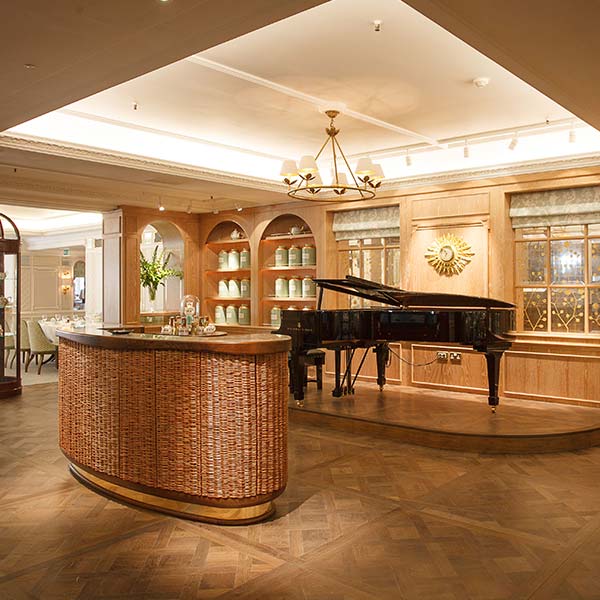
The quintessentially English custom of afternoon tea is experiencing a serious renaissance in London with dozens of hotels and tea salons offering both traditional services and those updated for a modern palate and sensibility.
Tea as a consumable is still an entrenched part of everyday English cuisine; the UK Tea and Infusions Association estimates the British drink 165 million cups of tea a day, more than double the amount of coffee consumed. However, the tea most picture, the traditional ritual of afternoon tea, has evolved from daily occurrence to occasional indulgence or special event celebration in the modern era. It still draws people in, though, and remains relatively unchanged from its Victorian roots.
England’s afternoon tea ritual is reputedly credited to the 7th Duchess of Bedford, a close friend of the Queen, who favored taking a small meal around 4 o’clock to help her last through the long afternoon until her fashionably late dinner. She started taking tea, sandwiches and sweet pastries in her private boudoir beginning in 1840. The Duchess enjoyed the practice so much she invited friends to join her, and the private affair quickly evolved into a popular high society ritual including its own fancy costumes and elaborate social behaviors.
A linguistic note for non-Anglophiles: afternoon tea is not to be confused with high tea. Afternoon tea was an upper-class luxury. High tea refers to the evening meal or dinner of the working class before they served dinner to the “upstairs” elite. Think of the upstairs, downstairs divide seen in period dramas set in large English estate houses.
Afternoon tea moved out of high society drawing rooms and into elegant London hotels like Claridges and the Ritz in the 20th century. Literature of that era provides a good primer on acceptable etiquette and behavior. Today, afternoon tea has been relegated to the realm of special occasion indulgence for birthdays, pre-wedding celebrations, baby showers or a party with friends but many of the same hotels offer very traditional takes on the practice.
Britain’s tea practices have had a global impact, predominantly on places tied to it by history like New Zealand, Australia and parts of the United States, said Jane Pettigrew, tea historian and author. The image of a proper tea as an elegant, upper class social occasion held in a drawing room using beautiful table wares may have originated in England, but has spread throughout the world, Pettigrew said.
In the present-day, afternoon tea can be found in countless cozy tea rooms across England, but the most elegant renditions are still found in London’s fancier hotels. The best of these afternoon teas still mimic the Victorian traditions: crustless finger sandwiches, warmed scones with preserves and Devonshire clotted cream, cakes and pastries, and of course loose leaf tea of the highest quality.
Where to find afternoon tea today
Popular spots today for a proper, traditional afternoon tea in London include many hotels that have offered afternoon tea for more than a century, including: Claridge’s, the Ritz’s Palm Court, Brown’s Hotel, the Savoy, the Waldorf Hilton and the Langham. Outside the hotel realm, Fortnum & Mason’s Diamond Jubilee Tea Salon and the Royal Opera House are also popular traditional destinations for afternoon tea.
In keeping with the sensibilities of our current era, some tweaks have also been made to afternoon tea traditions in some venues, including: Scandal Water at The London Edition (an off-beat boozy affair); Ichi Sushi and Sashimi Bar off the lobby of the Park Plaza (a focus on seafood supplants the sandwiches and cakes); the Ting Lounge at Shangri-La Hotel at The Shard (Asian and traditional tea treats with a view); Hotel Café Royal’s new London Royal Tea (where the city itself is the focus); Wyld Tea at Mondrian London (retro 1970s themed afternoon tea and a botanical twist); St. James’s Hotel & Club (game-themed sweets and confectionaries, like cheesecake dominoes); and Pret-a-Portea at the Berkeley (London Fashion Week inspired treats). There is even an afternoon tea bus tour offered by B Bakery which offers afternoon tea with a French twist served on a retro-themed tour bus full of tables to allow simultaneous tea consumption and sightseeing.